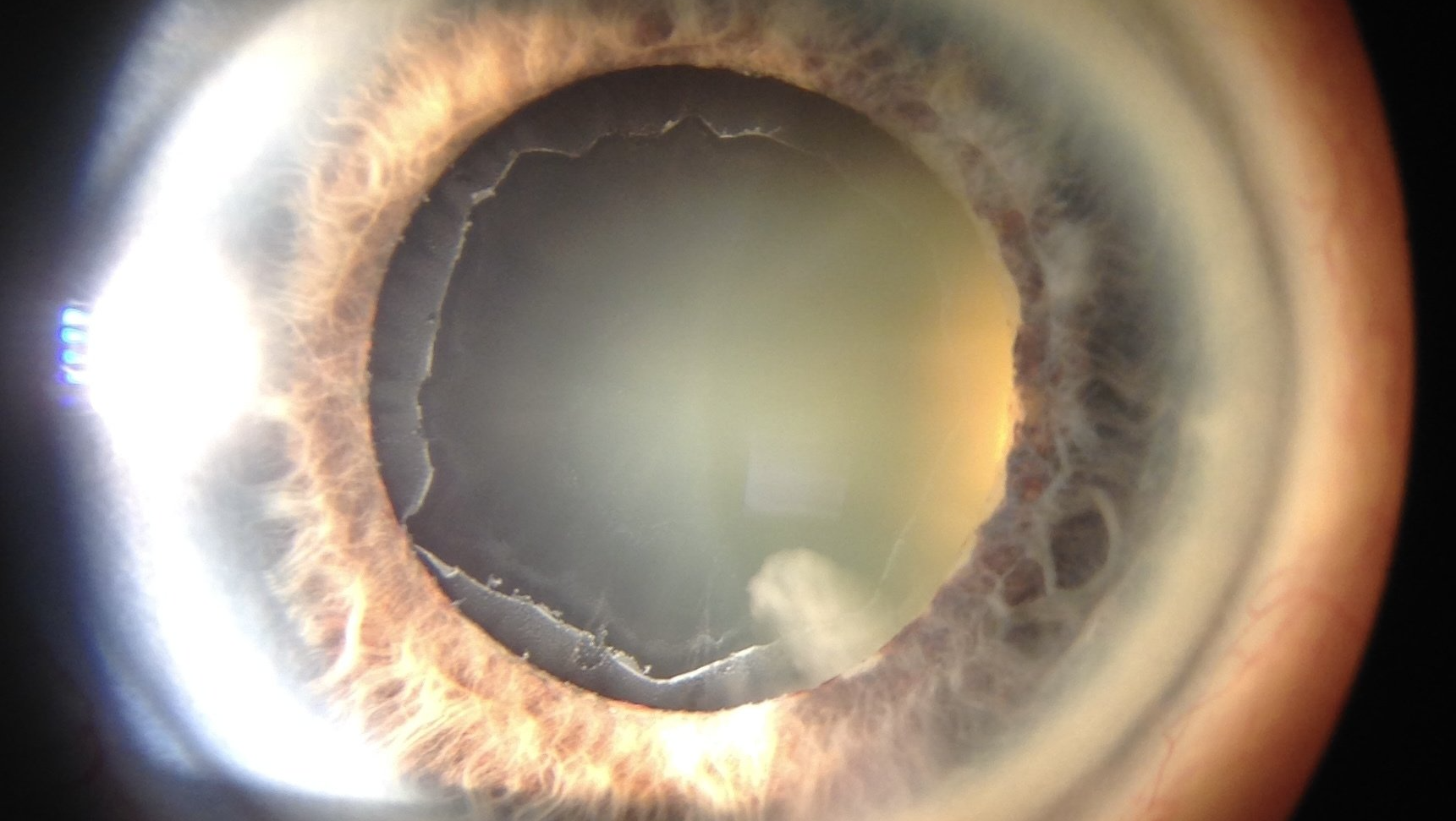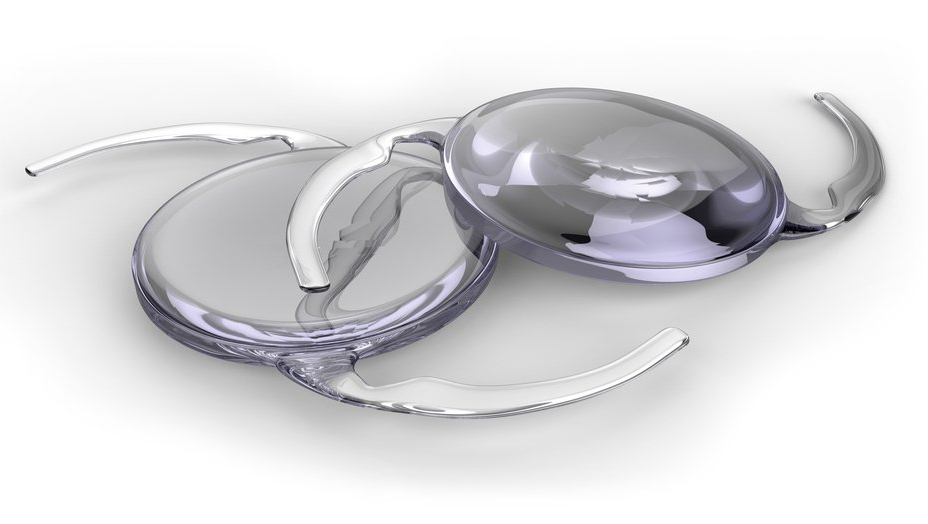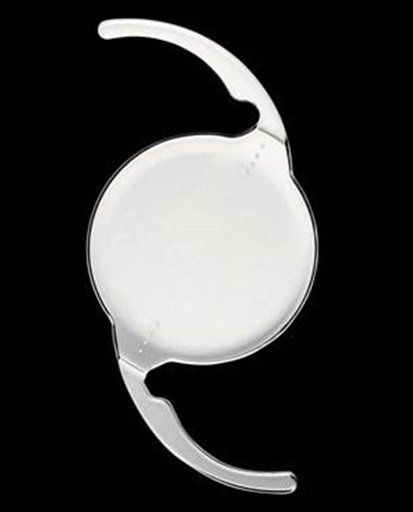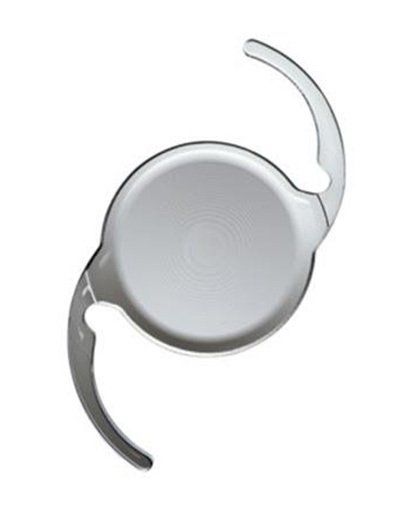Cataracts
What are Cataracts?
A cataract happens when the lens in the eye starts to lose transparency, which results in vision impairment. In some cases, it can cause complete blindness if not detected early and treated correctly. Unfortunately, cataracts are an unavoidable part of the aging process. They begin after the age of 40 because the proteins that make up the eye's lens usually start to deteriorate and/or clump together. The cloudiness eventually worsens and blocks light from arriving at the retina. Developing cataracts is very common, in fact, cataract surgery is the most common surgery performed in Canada. The disease can progress fairly slowly so those in the onset stages usually don't know about it. This condition is an important reason why scheduling comprehensive eye exams at least every other year and yearly beginning at age 65 is vital to your overall ocular health.
Get in touch
Cataracts Form
Symptoms
The initial symptom of cataracts is increased foggy eyesight that isn’t corrected by a patient’s current glasses prescription. Most patients begin to notice they require brighter light to be able to read. Other symptoms can include decreased night vision, unusual glare or halos, and eyesight with a general yellowish tint. Cataracts don’t cause discomfort and are generally there for a long time before they lead to any noticeable side effects. In most cases, the disease starts to develop at some point between the ages of 40 – 50, but many patients don’t suffer from any cataract symptoms before reaching their 60s.
Causes
Cataracts are an inevitable part of aging and the natural breakdown of the proteins within the eye's lens. This process happens to all people, though there are additional behavioral and health factors that often exacerbate the condition. Behavioral choices, such as using tobacco products, drinking too much or too often, and heavy sun exposure, have been associated with cataracts, as have health conditions, including diabetes mellitus and high blood pressure. Other factors that can aggravate the condition include:
- Genetics
- Some medications, like steroids
- Degenerative myopia
- Certain kinds of eye surgery
- Injury to the eye
Diagnosis
To determine whether a patient has cataracts, an eye doctor has to conduct a comprehensive eye exam. The team at Visionary Eye Surgeons has years of experience performing specialized diagnostic tests. The tests that detect cataracts are quite easy, relatively brief, and cause minimal discomfort.
Treatment Options
Once one of our ophthalmologists confirms a diagnosis of cataracts, we will begin to go over the different options for treatment. The treatments for cataracts are selected according to the advanced condition of the disease. In the beginning stages, a majority of patients simply need new prescription lenses. Patients with more advanced cataracts usually require surgery.
About Cataract Lenses
If you need cataract surgery, we will remove the natural lens within your eye and exchange it with a new artificial intraocular lens (IOL) made of a special type of plastic. IOLs, also known as lens implants, are extremely advanced and can effectively function like your natural lens. Often, the new lens may improve ongoing refractive issues as well. To help you determine which type of IOL works best for you, we will schedule an appointment called lens calculations. During this painless consultation, each eye will be measure with a multitude of sophisticated computers and lasers that customize the IOL selection for each individual patient. We will assess several factors, including your overall eye health, visual acuity, and daily activities that will help us select the best type of IOL for you.
Cataract Lens Options
The type of lens that will be chosen for you depends on the information we obtain during your diagnostic exams and your comprehensive eye evaluation. Below, you will find descriptions and explanations of some of our most popular premium lens options. Our goal is to help educate each patient so that the correct decision is made prior to surgery. Every patient has different visual needs and desires. The key question that needs to be answered is how important is it to the patient to reduce the need for distance glasses? Secondly, how important is it to the patient to reduce the need for reading glasses in addition to distance glasses?
Standard Single Vision Lenses
When replacing a patient's natural lens with a standard single vision lens, the vision will be clearer than it was prior to the removal of the cataract, however, there will still be a dependency on glasses afterwards. If patients want to reduce their dependency on glasses, they may have out-of-pocket expenses. About 50% of our patients choose a standard IOL and approximately 50% opt for a premium IOL. Below are the types of premium IOL's available. Remember, we are here to answer your questions and concerns. We understand how confusing this can be. Ultimately, cataract surgery is a life-changing operation with an extraordinarily high satisfaction rate!
Toric IOLs
In a healthy human eye, the cornea should have a perfectly round shape – like a soccer ball. But when you have astigmatism, the cornea attains an oval shape – somewhat like an American football. So, people with astigmatism tend to suffer from blurred vision at distance and near because images do not focus sharply on the retina.
Toric IOLs are similar to their soft contact lens counterparts and glasses prescriptions in that they have different levels of powers in various meridians of the lens to rectify the asymmetric power of the cornea.
Cataract surgery with a Toric IOL placement is similar to any other cataract surgery with a standard IOL. Before the procedure, the surgeon needs to choose the most suitable Toric IOL power, as well as the necessary orientation of the implant in the eye to successfully correct astigmatism. Toric IOLs typically feature special markers on the peripheral to help surgeons identify the orientation of the astigmatism correction in that specific lens.
After implantation, the surgeon rotates the toric IOL to align the astigmatism correction for the best results. Although the use of a toric IOL during the surgery does not necessarily increase the likelihood of complications, a misaligned IOL can result in blurred vision that then needs to be corrected with glasses, contact lenses, PRK, or rotation of the toric IOL. This is why we utilize the Callisto Laser Marking system. At Visionary Eye Surgeons we are the only surgical facility in Alberta with this advanced technology. The Callisto system takes a quick and precise measurement to confirm the IOL power before implantation using photographs of your eye. Once the toric IOL is implanted, the Callisto system then also assists your surgeon to make sure that the toric IOL aligned correctly on the correct axis. Sometimes multiple measurements are required to confirm that the astigmatism is treated as best as possible so this is why we may ask you to come back for supplemental examinations to select the perfect lens for you.
TECNIS ODESSEY™ Extended Depth-of-Focus IOLs
The Johnson & Johnson Odyssey™ Intraocular Lens is the most cutting-edge premium IOL designed to
take patients on a seamless visual journey—from distance to near and every point in between.
Built on Johnson & Johnson’s legacy of innovation and scientific rigor, Odyssey™ offers patients
a truly continuous range of high-quality vision, with minimal visual disturbances and exceptional
contrast sensitivity. Whether for cataract patients or those seeking lifestyle-enhancing vision
correction through refractive lens exchange, Odyssey™ represents the next evolution in
presbyopia-correcting IOL technology.
Full-Range Vision Without Compromise
∙Combines EDOF and multifocal technology to provide high-quality continuous vision
at near, intermediate, and distance ranges.
∙Reduces the need for glasses in most daily activities, including reading, computer use,
and driving.
- Enhanced Contrast Sensitivity
∙Incorporates the TECNIS® optical design, known for superior image quality and
contrast sensitivity—especially important in low-light environments.
- Reduced Haloes and Glare
∙Engineered with OptiBlue® Light Filter and Achromatic Technology to reduce visual
disturbances commonly associated with multifocal lenses, such as halos and glare,
enhancing night vision.
- Superior Chromatic Aberration Correction
∙TECNIS® IOLs are designed to correct chromatic aberrations, resulting in sharper, more
vivid images.
- Proven Platform
∙Built on the well-established TECNIS® platform, with a legacy of safety, stability, and
performance trusted by surgeons globally.
Target Audience:
∙Patients undergoing cataract/RLE surgery who desire spectacle independence and visual
freedom from glasses
Odyssey™ isn’t just a lens—it’s a journey to visual freedom. With its continuous range of
vision and low incidence of visual disturbances, Odyssey™ empowers patients to see clearly,
live actively, and age confidently.
TECNIS Puresee™ Lens
TECNIS PureSee™ is a new type of IOL that is made by Johnson and Johnson Vision (formerly American Medical Optics and then Abbot Medical Optics). The PureSee™ IOL is a presbyopia-correcting IOL; it's designed to provide high-quality vision across a range of distances, including near, intermediate, and far, with minimal side effects. It uses a purely refractive design, meaning it refracts light to create clear vision across the range of focus without relying on diffractive elements. The lens may provide better image contrast, especially in low-light conditions.
This lens is also available in the toric version to correct for astigmatism for patients that have astigmatism.
The PureSee™IOL offers a good balance between the benefits of a monofocal IOL (excellent distance vision) and an extended depth of focus (EDOF) IOL (improved intermediate and near vision).
Many patients ask about cost. Many things in medicine are often not covered and such is the case with premium intraocular lenses such as the TECNIS PureSee™ IOLs. However, with added cost comes added value and this lens is of exceptional value for the cost.
TECNIS Eyhance® Lens
TECNIS Eyhance® is a new type of IOL that is made by Johnson and Johnson Vision (formerly American Medical Optics and then Abbot Medical Optics). This exciting new technology uses an optical principle of spherical aberration in order to provide better intermediate vision than standard monofocal IOLs. This means than the lens is designed to have a continuous power differential between the center and periphery of the lens. The effect is excellent intermediate and distance vision with the best near vision located approximately 66 centimeters.
This lens is also available in the toric version to correct for astigmatism for patients that have astigmatism.
Many patients ask about cost. Many things in medicine are often not covered by insurance such as specialized hearing aids and dental implants and such is the case with premium intraocular lenses such as the TECNIS Eyhance® IOLs. However, with added cost comes added value and this lens is of exceptional value for the cost.
TECNIS Synergy™ Lens
This is one of the most advanced lens on the market today, made by Johnson and Johnson Vision (formerly American Medical Optics and then Abbot Medical Optics). The TECNIS Synergy™ Extended Depth of focus lens design allows for superior near vision and exceptional distance vision.
The TECNIS Synergy™ is not a multifocal lens. A multifocal lens works by splitting light into separate distinct focal points on the retina. Your brain then learns to use the appropriate focal point depending on your activity. In contrast, the TECNIS Synergy™ IOL transmits light over a range of distances creating an elongated focus, hence the term, extended depth of focus. Patients who elect the TECNIS Synergy™ IOL are not dependent on glasses after surgery. With a focal point as close as 33 cm patients can even read small print after surgery.
The synergy lens is available in a toric version for patients with astigmatism as well.
Many patients ask about cost. Many things in medicine are often not covered by insurance such as specialized hearing aids and dental implants and such is the case with premium intraocular lenses such as the TECNIS Synergy™ IOL. This lens is simply life changing, so if you do not want to spare anything but the best this is the choice for you.





